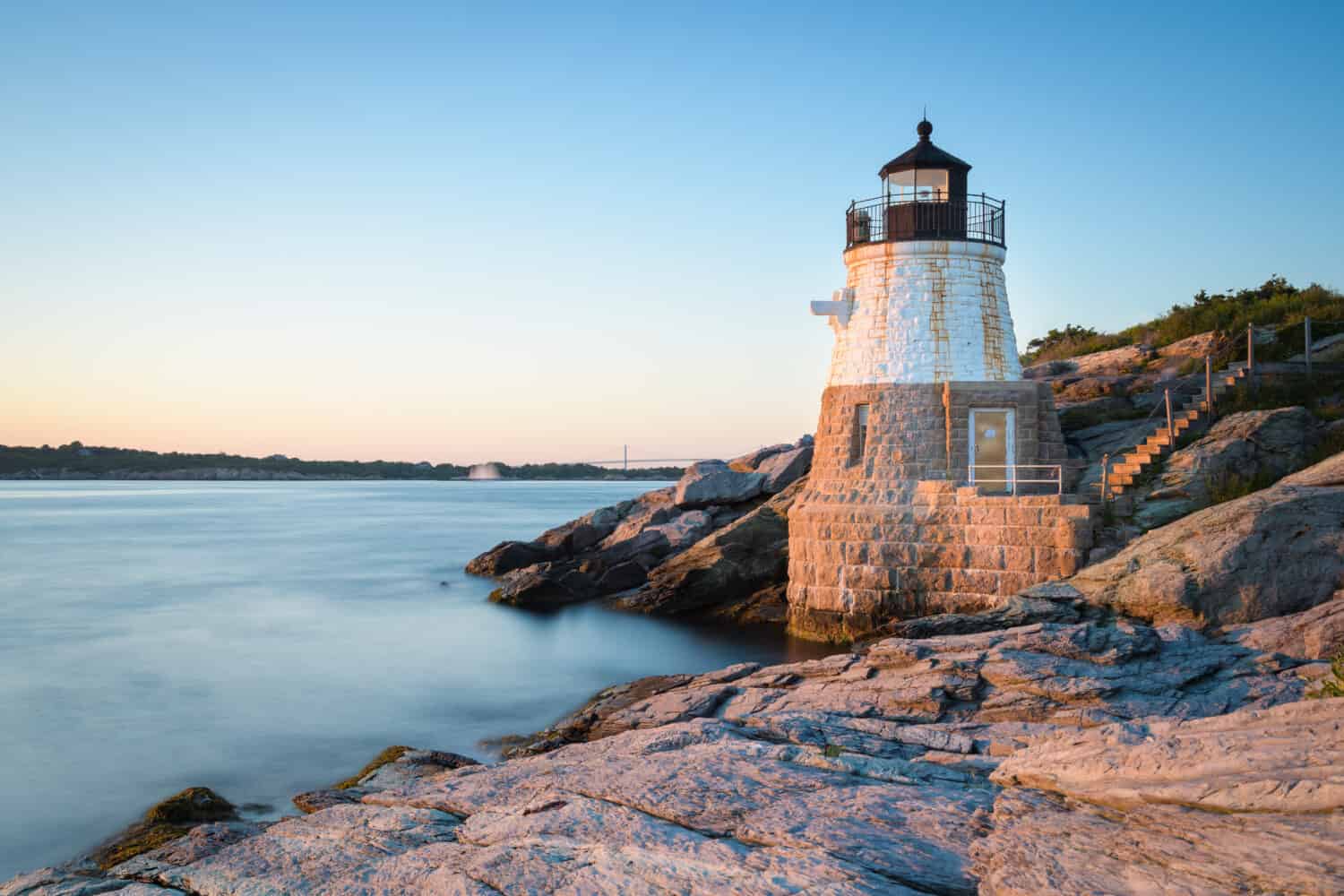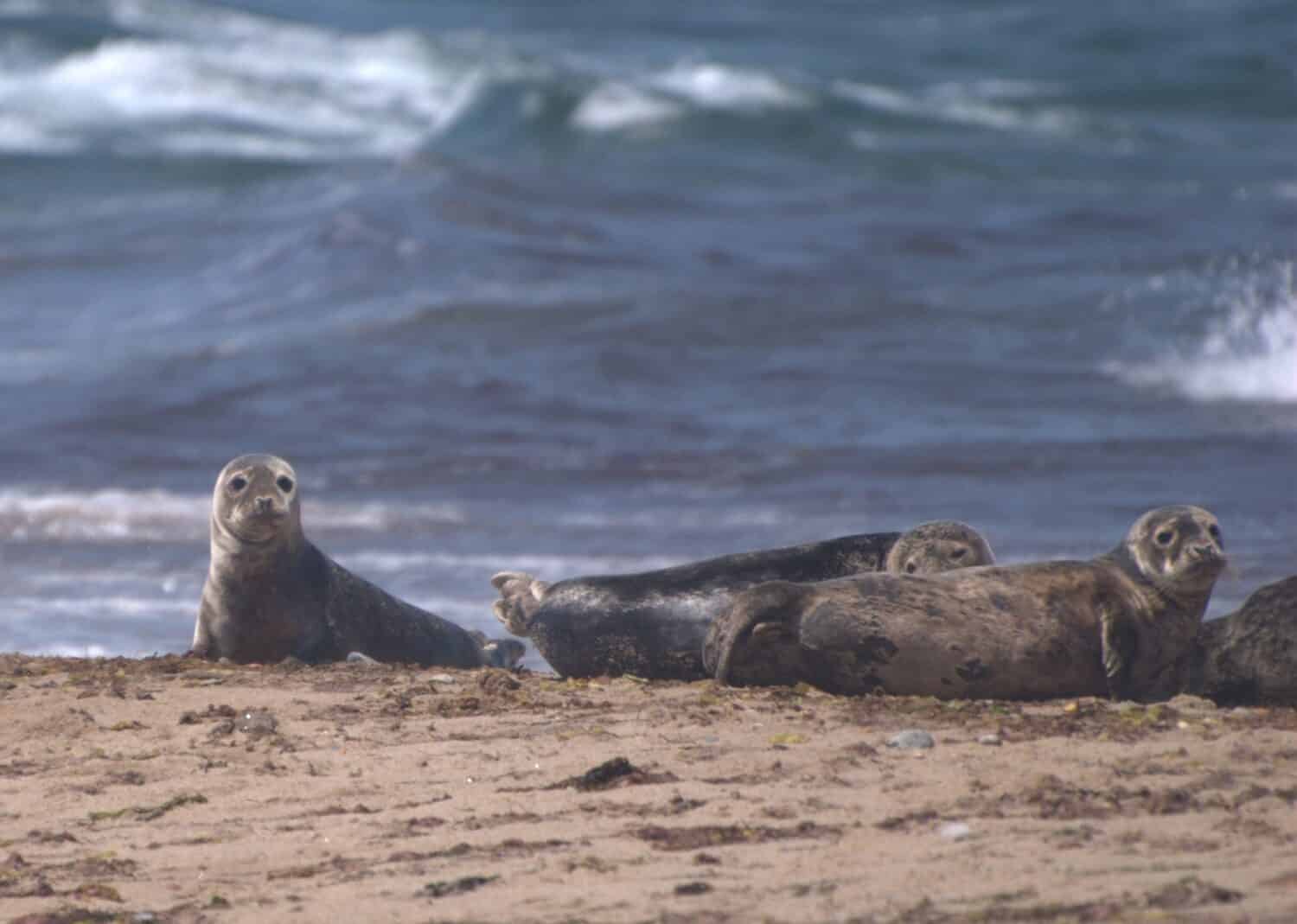If you’re not careful, you’ll miss Rhode Island when you’re looking at a map of the United States. It’s not easy to point out–it sits hidden away south of Massachusetts and east of Connecticut.
Also known as the Ocean State, it is the smallest state in the entirety of the United States. But how wide is Rhode Island? From east to west, Rhode Island is only 37 miles wide, and only 48 miles from north to south. With an area of only 1,214 square miles, Little Rhody is one of the oldest states in the nation as well.

Rhode Island has 21 working lighthouses that are still in use today!
©Jim Schubert/Shutterstock.com
When did Rhode Island Become Part of the United States?
Rhode Island was admitted to the Union on May 29th, 1790, and was the 13th state to become a part of the new country that was forming. Even though it has “island” in the name, it is a continental state, and is a part of the United States mainland.
Rhode Island was also one of the original 13 colonies, originally founded by Roger Williams. Williams had been expelled from the Massachusetts Bay Colony for his views on religion. He began to seek out a place where people were welcome to practice their own religion and have their own religious views. Eventually, he bought land in Narragansett Bay and named it Providence. This area was a safe haven for others who may have different religious beliefs.
From 1636 until 1707, Rhode Island was an English colony and then became a colony of Great Britain. After the American Revolution broke out in 1765, the fate of the colonies was unclear. However, after the Declaration of Independence was signed in 1776 and the war ended in 1783, colonies began to receive statehood. Rhode Island came to be known officially as the State of Rhode Island and Providence Plantations.
Geography of Rhode Island

Narragansett Bay is composed of over 30 islands, like this one, Conanicut Island.
©Wangkun Jia/Shutterstock.com
Rhode Island has a total area of 1,214 square miles–the smallest in the United States. From north to south, it extends just over 48 miles. Rhode Island is 37 miles wide. However, its minute dimensions don’t make it the least populous state in the nation. As of the 2020 census, Rhode Island is home to about 1.1 million people, the 43rd most populous state. Even Wyoming, which is 80 times larger than Rhode Island, has a smaller population, with 578,803 residents as of 2020.
There are a large number of oceanfront beaches in Rhode Island, which is why it’s nicknamed the Ocean State. It has almost 400 miles of coastline that run along its southern border and up through Narragansett Bay. There are over 30 islands that makeup Narragansett Bay. The three largest islands are Aquidneck Island, Conanicut, and Prudence.
Rhode Island has a varying climate, because of its position in the northeastern United States. It has hot summers and cold winters, and will often get a lot of snowfall during the winter. The Ocean State is also prone to hurricanes and tropical storms that come up the eastern seaboard and is easily affected by these disasters.
Cumberlandite, an incredibly rare rock, is only able to be found in Rhode Island. It’s rare and sought after because of how limited it is naturally. Cumberlandite contains titanium, which was used by settlers for tools, and is slightly magnetic because of the iron found in it. Additionally, it was considered valuable as settlers thought that the iron would be good for building cannons. However, the iron was weak, and the cannons would crack when in use during the Revolutionary War.
Wildlife in Rhode Island
Rhode Island is home to many different kinds of wildlife. Because it’s so close to both freshwater and saltwater, there is a variety of natural wildlife that calls the state home. The Ocean State has a humid, muggy continental climate that also plays a role in attracting different kinds of wild animals.

Harbor seals are the state mammal of Rhode Island.
©Kara Healey/Shutterstock.com
A fair amount of mammals can be found wandering throughout Rhode Island’s various wildlife refuges and habitats. Black bears, white-tailed deer, and fallow deer call Rhode Island home. Additionally, off the coast lies an array of different marine mammals. Within the Rhode Island ocean waters, there are blue whales, humpback whales, and fin whales. Also, you can find the state mammal, the harbor seal, swimming through the cold waters of the state.
In addition, a great amount of rodents reside in Rhode Island. The eastern chipmunk, southern flying squirrel, and woodchucks all live within Rhode Island’s limited borders.
Conclusion
Rhode Island is the smallest state in the United States, and only extends 37 miles from east to west. However, don’t let its size fool you! The Ocean State has over 400 miles of coastline that run throughout Narragansett Bay, a top attraction to the state. It is home to many different kinds of wildlife, from black bears to humpback whales. Even though it’s the smallest state in the United States, Rhode Island has lots to offer!
The photo featured at the top of this post is © TUBS / CC BY-SA 3.0 – License / Original
Thank you for reading! Have some feedback for us? Contact the AZ Animals editorial team.






